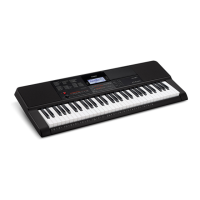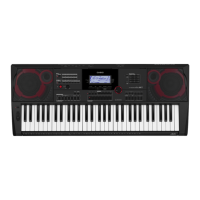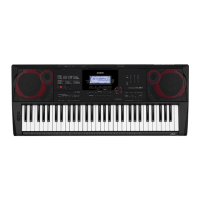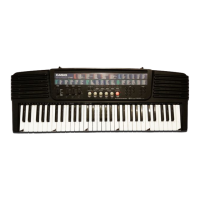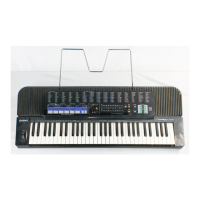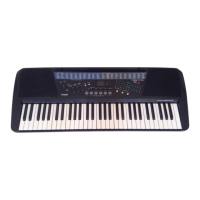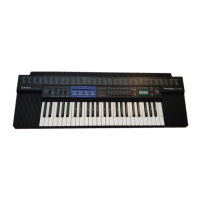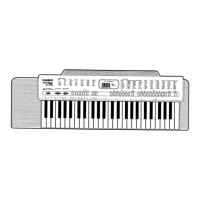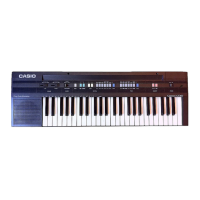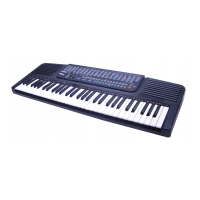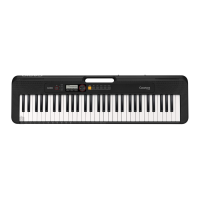EN-105
Using the MIDI Recorder to Record
The MIDI recorder records operations as data called “events”.
For example, pressing a keyboard key causes multiple events
to be recorded: the timing of the key press, the pressed key
(pitch), press time (note length), and key pressure (note
volume).
Event editing can be used to edit the events below.
• Note events
• Tone number events
• Rhythm number events (system track only)
• Auto Accompaniment chord events (system track only)
During event editing, you can use the [2] (w) or [5] (q) bm
number keys to scroll between individual events. Each event
appears on the display as described below.
■ Note Events
With this Digital Keyboard, you can edit the following three
note event parameters: note number, velocity, and gate time.
If a note event is displayed during event editing, the first
parameter that appears is the note number.
● Note Number Display
Each press of the [1] (V) or [3] (W) bm number key
switches the displayed note event to another parameter.
● Velocity Display
● Gate Time (Beat) Display
● Gate Time (Tick) Display
■ Tone Number Event
The tone number is displayed by the event name “Tone”.
■ Rhythm Number Event
The rhythm number is displayed by the event name “Rhythm”.
■ Auto Accompaniment Chord Event
Only the chord root and type of Auto Accompaniment chords
are displayed.
An event named “NonChord” is displayed when a chord is
configured not to sound.
■ End of Track
“EOT” (End Of Track) is displayed when the end of the target
track (part) is reached.
Editing a Recorded Song in Event
Units (Event Editor)
Event Display
C4
V e l o c i t
y
GateBeat
GateTi ck
Rh
y
th
m
Ab
M
7
EOT
CTX5000_3000_EN.book 105 ページ 2018年2月26日 月曜日 午後3時56分
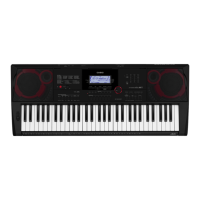
